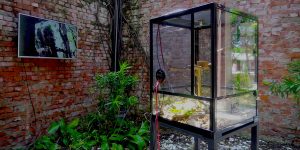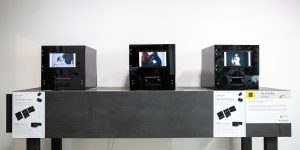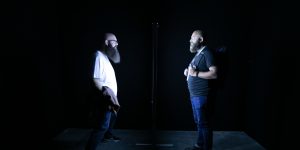Environment

Shared Habitats
The exhibition Shared Habitats focuses on the influence of technology on socio-cultural processes through fourteen works of a digital, biological, and interactive nature. The exhibition focuses on the location of organisms in their environment, the effects of humans on their habitats, and the artistic handling of new biomaterials and technologies. Many of the works on display are based on scientific experiments that are analyzed in a cultural context.

PSEUDOREALITY ALTERNATIVES
Cheung Kong School of Art and Design – Digital Media Art Department, Shantou University
Worldwide human society is moving from the digital to hyper digital age where virtuality is becoming as important as reality. Interpersonal communication is largely happening within a pseudo-real social landscape recently enriched with new artificial intelligence. However, we still find it confusing to navigate our existing social environment and understand each other clearly on different levels such as cultural, emotional, intellectual, and interpersonal. Through the works exhibited by Cheung Kong School of Art and Design, students are trying to communicate ideas of multiple understandings and misunderstandings, subtle and alternative meanings, and how that can affect our social and emotional realities. As artists and descendants of the Bauhaus, we recognize that our role is changing. We no longer believe in the heroic genius of the master who forms the world in a state of intuition. Embedding and feedback reveal that responsible action requires diverse cognitive variations that involve the counterpart in a performative way.

100 Jahre Bauhaus: We are not alone / Shared Habitats
We are not alone consoles and warns us: it promises an answer from the ecosphere – animals, plants, cosmos, which speak to us in an old-fashioned way – just as it reminds us that we still do not understand enough of this ecosphere, just as we overlook many other humans who do not live in our culture, our sphere of life, or our social class. And it reminds us that the world does not end with the Earth or even our own limited field of vision. At the same time, the title points out that our technologies are not passive tools that we use with our hands. Rather, they have mutated into co-creative teammates who make predictions, take decisions, and not only generate their own suggestions for action but also implement them. We are not alone! As artists and descendants of the Bauhaus, we recognize that our role is changing. We no longer believe in the heroic genius of the master who forms the world in a state of intuition. Embedding and feedback reveal that responsible action requires diverse cognitive variations that involve the counterpart in a performative way.


